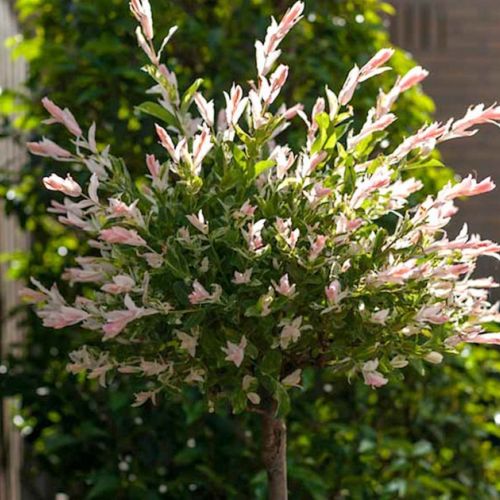The Siam Pumpkin: Everything You Need To Know In 5 Questions
Although still relatively unknown in France, the Siam pumpkin is a cucurbit that's worth discovering. It will surprise you with its numerous fruits featuring a unique texture. Highly productive, it yields large fruits that can be stored for several years. We invite you to discover how to grow and consume it in 5 questions.
What is the Siam pumpkin?
The Siam pumpkin is a vegetable plant of the Cucurbitaceae family. It is grown on several continents for its edible fruits, which can be eaten raw or cooked like a vegetable.
This squash, whose botanical name is Cucurbita ficifolia, is also known as fig-leaf gourd, black-seeded squash, chilacayote, and Malabar melon.
This cucurbit is a creeping or climbing plant with long, very vigorous stems that cling to a support with tendrils. It produces large leaves divided into 5 rounded lobes, resembling the leaves of the fig tree (hence the Latin name of this species ficifolia).
The ovoid-shaped fruits average 15 to 20 cm in length and can weigh up to 6 kg. They are green when mature and have light spots, making them somewhat resemble watermelons.
While the skin of these squashes is very tough, their white flesh is very tender. The flesh also becomes very stringy after cooking, taking on a texture similar to vermicelli or sauerkraut, just like the aptly named spaghetti squash!
Where does this variety of squash come from?
Even though Siam is the former name of Thailand, the Siam pumpkin is not native to Asia. This species, which does not exist in the wild, was likely domesticated in South America.
Like other squash, this vegetable plant was only introduced to Europe after Christopher Columbus's voyages to America.
It was cultivated very early on in India, Thailand, and China for animal feed. On the European continent, it was first introduced to Spain and Portugal, where it is still consumed... in the form of jams and cakes!
3- How to cultivate the Siam squash?
The Siam pumpkin is a particularly vigorous cucurbit that requires almost no maintenance. Its stems, which can grow over 10 meters long, quickly cover the ground or the support they are trained on.
Like all squashes, it is a greedy plant that needs rich, well-fertilized soil and significant water supply. In return, each plant can produce up to 15 large fruits!
This plant is a frost-tender perennial. It lives for several years in a tropical climate or in certain protected areas of the French Riviera but is grown as an annual plant in other regions of France.
The best way to discover this unique squash species is to sow seeds from February to April in pots or from March to May directly in the ground. The website of the Kokopelli Association and the Ferme de Sainte-Marthe both offer seeds.
When to harvest Siam pumpkins?
Siam pumpkins are harvested from June to October. To determine if a fruit is ready to be picked, simply check its stem. The drying of the stem is an indication that the Siam pumpkin is ripe.
When stored under proper conditions, in a dry and well-ventilated area, at a temperature between 10 and 12°C, this pumpkin can be preserved for up to 2 years.
The fruits should be placed in crates set up high, ensuring they are well spaced apart.
How to use Siam pumpkin in cooking?
When harvested at maturity, the Siam pumpkin can be eaten raw like a melon. Young pumpkins can be cooked like zucchini. When they are larger, Siam pumpkins become fibrous when cooked and can be prepared as sauerkraut or in a gratin.
Even more surprisingly, this gourd is often used to make a jam called "angel hair" jam! Since the flesh of this fruit vegetable is quite bland, this jam is flavored with lemon, orange, and cinnamon.
In Portugal, this jam called chila is used in a delicious almond cake! This Portuguese dessert is reputed to be very easy to make as it only contains 4 ingredients.







